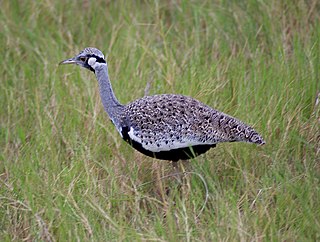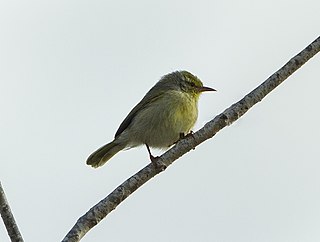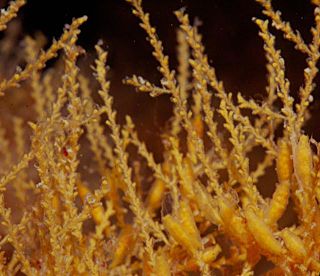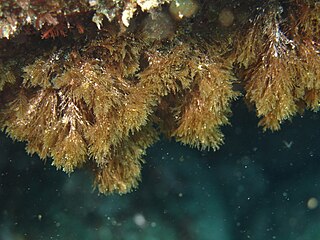
Gentianella tenella, the slender gentian or Dane's dwarf gentian, is a species of the genus Gentianella.

Hartlaub's bustard is a species of bird in the family Otididae. It is found in open grassland with grass up to 1800 meters in Ethiopia, Kenya, Somalia, Sudan, Tanzania, and Uganda.

The common jery is a species of bird in the family Cisticolidae. It is endemic to Madagascar.

Auriculella tenella is a species of tropical air-breathing land snail, terrestrial pulmonate gastropod mollusc. This species is endemic to the United States.

Atolla wyvillei, also known as the Atolla jellyfish, Coronate medusa, and deep-sea jellyfish, is a species of deep-sea crown jellyfish. It lives in oceans around the world. Like many species of mid-water animals, it is deep red in color. This species was named in honor of Sir Charles Wyville Thomson, chief scientist on the Challenger expedition.

Atolla is a genus of crown jellyfish in the order Coronatae. The genus Atolla was originally proposed by Haeckel in 1880 and elevated to the monotypic family level, as Atollidae by Henry Bigelow in 1913. The six known species inhabit the mesopelagic zone. The medusae possess multiple lobes called lappets at the bell margin. Medusae also have eight tentacles, alternating with eight rhopalia, and twice as many lappets occur as tentacles.

Prunus tenella, the dwarf Russian almond, is a species of deciduous shrub in the genus Prunus, native to steppes of Eastern Europe and Western Siberia, as well as dry open sites of Caucasus, Western and Central Asia.

Sertularella is a genus of hydroids in the family Sertulariidae.

Burmannia is a genus of flowering plants long thought of as related to orchids, although more recent studies suggest closer affinities with either the Dioscoreales or the Melanthiales. The plants are herbs, partially autotrophic (photosynthetic) but also partially parasitic on soil fungi.
Crisia is a genus of bryozoans in the family Crisiidae. Some species are known from the fossil record.

Botrynema is a genus of hydrozoans in the family Halicreatidae.

Eirenidae is a family of hydrozoans.

Felicia tenella is an annual, sometimes biennial, herbaceous plant that may be slightly woody at its base, of 5–70 cm tall, that is assigned to the family Asteraceae. The species is very variable in size and hairiness. Its branches may be erect or ascending, and the leaves are narrowly line-shaped, 2–5 cm long and about 1 mm (0.04 in) wide. The leaves have a callous tip, lack visible nerves, and are mostly rigidly ciliate. The flower heads sit individually at the tip of stalks, have an involucre of three whorls of bracts, and about thirty light blue ray florets surrounding many yellow disc florets. Four subspecies are recognised. The species naturally occurs in the Northern Cape and Western Cape provinces of South Africa.

Halopteris is a genus of cnidarians belonging to the family Halopterididae that has a cosmopolitan distribution. The genus was first described in 1877 by Irish naturalist George James Allman, and the type species is Halopteris carinata.

Eutonina is a genus of cnidarians belonging to the family Eirenidae.

Eucheilota is a genus of cnidarians belonging to the family Lovenellidae.
Chuniella is a genus of nemerteans belonging to the family Chuniellidae.

Atolla chuni is a species of crown jellyfish within the family Atollidae. The species is found distributed in the Southern Ocean and some parts of the southern Pacific and Atlantic Ocean in pelagic environments at depths of up to 5198 meters. Individuals have been found with partially digesting remains of large Calanoida copepods, chaetognaths, Hyperiidea amphipods, and krill attached to the gastric cirri. It grows to a length of 7 centimeters.
Atolla parva is a species of true jellyfish in the family Atollidae. It is found in the north Atlantic Ocean and in waters around New Zealand.
Atolla reynoldsi is a species of true jellyfish in the family Atollidae. It is known from type specimens found in the north Pacific Ocean.















